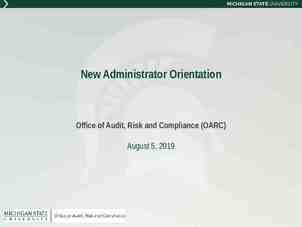Role of diet and nutrition in dental caries Presented By: Dr. Rajeev
38 Slides2.34 MB

Role of diet and nutrition in dental caries Presented By: Dr. Rajeev Kumar Singh

Diet Food Any substance which when taken into the organism may be used either to supply energy or to build tissue. Balanced diet Diet is referred Diet which contains a to variety of foods in as "food and such quantities and drink proportions that the regularly need for energy is consumed.” adequately met for Diet refers to the maintaining pattern of food health ,vitality and intake general well being

Nutrition The process of nourishing or Substances in food that are being nourished, especially the essential for energy ,growth process by which a living and normal functioning of the organism assimilates food and body and maintenance of life. uses it for growth and for replacement of tissues. Nutrients The science or study that deals 1) Macronutrients :carbohydrates, fats & proteins with food and nourishment, especially in humans. 2) Micronutrients :minerals and vitamins

Nutritional Status & Dental Caries Dental caries is an interaction between diet, cariogenic flora and tooth of the host. Ingestion of food may affect oral-dental health by both systemic and local mechanisms Nutritional effects are mediated systemically Dietary effects are mediated locally in the oral cavity

Systemic effects Absorption & circulation of nutrients to all cells & tissues Mediated through influences on Development of teeth Quality & quantity of saliva Improved host resistance Improved function

Quality of saliva Modifying salivary flow rates Influencing metabolism of oral flora Local effects

Carbohydrates Monosaccharides eg. Glucose, fructose Oligosaccharides eg. Sucrose, lactose Polysaccharides eg. Starch, glycogen

Carbohydrates and caries Sugars are the most important dietary factor in the development of dental caries A strong correlation exists between both the amount and frequency of sugar consumption and the development of caries

Abilities of natural and refined carbohydrates to cause dental caries Because of the limited amount of tooth decay usually noted in people ingesting diets containing only natural foods, it is a common belief that unrefined carbohydrates do not contribute significantly to dental caries etiology. Raw carbohydrates have anti enzymatic substances which are removed in the refining process. In all probability the only reason they are not ordinarily associated with caries etiology is not that they resist enzymatic degradation but rather that they make up such a limited portion of the carbohydrate fraction of the diet.

Most commonly used table sugar supplying calories Constituent of cane sugar, beet sugar & pineapple Disaccharide (Glucose Fructose) Sucrose (cane sugar)

Sucrose “arch-criminal of dental caries” The simplest method of reducing caries by dietary means would be to eliminate sucrose from the diet. However, such a step would be difficult. Sucrose is a rich source of energy; it is cheap and generally plentiful; it has attractive cooking characteristics and the majority of people greatly enjoy eating sucrose containing foods

STARCH COOKED STARCHY FOOD WHEN COMBINED WITH REFINED SUGARS (DOUGH NUT , PASTRY, POTATO CHIPS) RESULTS IN PLAQUE FORMATION, DENTAL CARIES, PERIODONTAL DISEASE It has also been shown that the presence of starch increases the acid production from sucrose

Vitamins Deficiencies of vitamin D and A have been shown to affect the natural development of the teeth, which can make them more susceptible to decay. Under nutrition, coupled with a high intake of sugars, may increase the risk of caries. Severe vitamin C deficiency can result in inflammation of the gums,

Fruits As part of a normal mixed diet there is little evidence that fruit causes caries Animal studies have shown that when fruit is consumed in very high frequencies (e.g. 17 times a day) it may induce caries.

Breastfeeding Studies have associated breastfeeding with lower levels of dental caries in early childhood. This is likely to be due to the fact that breastfed infants consume less sugar than infants fed formula milk to which free sugars are often added.

Minerals Fluoride is well known for its cariostatic action Optimum levels of fluoride reduces the incidence of caries Higher levels of fluoride may cause dental fluorosis.

Foods That Cause the pH to Fall Below 5.5 Apple drink Apricots, dried Bananas Beans, baked Beans, green canned White bread Whole wheat bread Caramels Chocolate milk Cola Crackers, Cream cheese Doughnuts Gelatin-flavored dessert

Noncariogenic sucrose substitutes There have been many attempts to identify noncariogenic sucrose substitutes. These have included sweetening agents such as saccharine and cyclamate, Sugar alcohols of eg. sorbitol and xylitol are perhaps the best known examples Natural sugars such as glucose, fructose, lactose and maltose are non cariogenic

For a variety of reasons none of these substitutes has widespread acceptance. In some the taste is unsatisfactory, others are expensive, non calorific substitutes fail to provide energy needs, and some are thermolabile and hence cannot be used in cooking.

Sugar substitutes CALORIC / NUTRITIVE Can be metabolized by body to yield energy Add bulk to food Sugar alcolhols Glycitols polyols NON-CALORIC / SWEETENERS Aspartame Cyclamate Saccharine acesulfame

Important factors in caries determination Constitue nts Physical properties of food Natural versus Processed food Acidity of foods

Food constituents The four carbohydrates starch, sucrose, fructose and glucose comprise the greatest proportion of foods consumed by man. Starch is not cariogenic in humans. Glucose & fructose are minor constituents of human foods as they are present only in dried fruits, honey and milk

Physical properties of food Mechanical properties Hardness, cohesiveness Viscosity, adhesiveness Geometric properties Particle size Shape Others Moisture Fat content

Natural versus processed food Saliva incubated with refined food cause a greater dissolution of enamel than when incubated with unrefined foods. Mixtures that included bran, wheat germ and unrefined treacle contained protective factors

Acidity of foods Natural foods such as lemons, apples, fruit juices and carbonated beverages are sufficiently acidic when in prolong contact with tooth. Habitual use of these foods and beverages may cause etching of enamel with cavitation

DIET COUNSELING L O V E L Y You like to have!!!!!! BUT, through these you send me my enemies . Ha!ha!ha! T H I N G S Ha!ha!ha! THE GERMS T h e se g e rm s d e stro y m e !!! A h !! H e lp m e & P le a se h e lp m e !!

Diet counseling IT IS THE ACT OF PROVIDING ADVISE AND GUIDANCE TO A PATIENT OR THE PATIENTS FAMILY REGARDING THE TYPE OF FOOD THAT SHOULD BE TAKEN AND ITS RELATION TO BOTH HEALTH AND DISEASE

NEED FOR COUNSELING To modify dietary habits, particularly ingestion of sucrose containing foods, in forms and amounts that promote caries To correct dietary imbalances that could interfere with the patient’s general health and well being

AAPD (2005) Recommends Breast feeding of infants to ensure best possible health , developmental and psychosocial outcomes Educating people about association between frequent consumption of carbohydrates and caries Educating people about other health risks associated with excess consumption of carbohydrates , fats and sodium

PATIENT SELECTION Patient should have a positive attitude and be willing and to make long- term efforts towards improvement of oral status through dietary means. Should have a demonstrable need for dietary improvement.

GUIDELINES FOR COUNSELING Likes and dislikes Personal data GATHERIN G INFORMATI ON Suggest diet diary Cause of problem

STEPS OF A DIET COUNSELING PROGRAMME 1) First appointment - Identification of high-risk patients. - Maintaining the diet diary 2) Second appointment - Evaluation of the diet diary - Develop an action plan - Well balanced diet - Use of Nutritive sugar substitutes 3) Third appointment - Evaluation of the progress

DIET DIARY Record every food item consumed solid or liquid during 6 consecutive days Record food consumed during mealtimes, between meals. Use appropriate household measures to measure the amount of food. The kind of food and how it was prepared. Addition to the food in cooking or at table

EVALUATE AND INTERPRET INFORMATION Nutritional adequacy of diet Amount of sugary foods Frequency of sugary foods Personal and social history Medical history Systemic and environmental factors

DEVELOP AND IMPLEMENT A TREATMENT PLAN Gradual, qualitative changes in diet Gradually eliminate sugary foods Avoid patient dislikes Prescribed diet should vary from normal diet pattern as little as possible Nutritionally balanced diet Increase intake of protective and detergent foods – fruits, vegetables, cheese, etc

ACTIVE PARTICIPATION OF PATIENT Patient encouraged to involve himself in diet monitoring and suggest changes in menu REGULAR FOLLOW – UP To monitor progress Make changes To clarify doubts To motivate and encourage

Thank You







